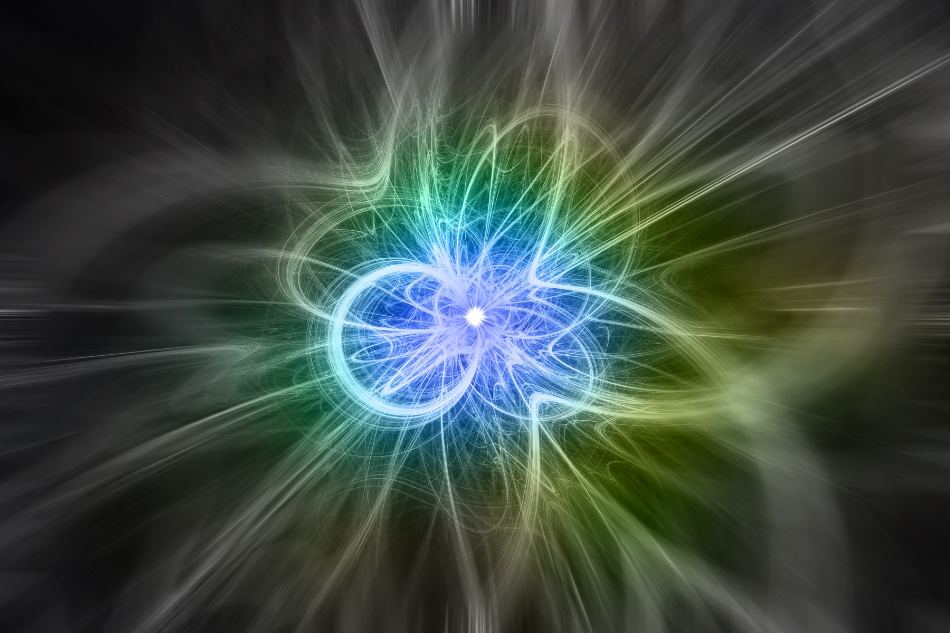Mar 9 2020
These days, one of the greatest enigmas in astrophysics is a minute subatomic particle known as a neutrino. This particle is so tiny that it travels through matter—that is, human bodies, the atmosphere, and the very Earth—without getting detected.
 An artist’s rendition of neutrino activity. Image Credit: Shutterstock.
An artist’s rendition of neutrino activity. Image Credit: Shutterstock.
Globally, physicists have been attempting to detect neutrinos for many years. Neutrinos, which are lighter than any other subatomic particles known so far, are continuously bombarding the Earth. Researchers believe that by trapping neutrinos, they could analyze these subatomic particles and, hopefully, infer their origin as well as their function.
However, present attempts are usually costly and tend to overlook a whole group of high-energy neutrinos from a few of the farthest reaches of space.
For the first time, the latest research recently published in the Physical Review Letters journal demonstrates an experiment that can potentially identify that group of neutrinos utilizing radar echoes.
These neutrinos are fundamental particles that we don’t understand. And ultra-high-energy neutrinos can tell us about huge parts of the universe that we can’t really access in any other way. We need to figure out how to study them, and that’s what this experiment tries to do.
Steven Prohira, Study Lead Author and Researcher, Center for Cosmology and Astroparticle Physics, The Ohio State University
The research depends on a phenomenon called a cascade. Researchers believe that neutrinos travel via the Earth at virtually the speed of light—as individuals read this, billions of neutrinos are traveling through them now.
A collision between higher-energy neutrinos and atoms is more likely to take place. Such collisions result in a cascade of charged particles—“like a giant spray,” stated Prohira. The cascades are critical because if scientists can identify the cascade, they can identify a neutrino as well. Ultra-high-energy neutrinos are extremely rare and this has prevented researchers from detecting them, to date.
Researchers have now understood that the most optimal sites to identify neutrinos are in huge sheets of remote ice—the most effective and longest-running neutrino experiments are in Antarctica. However, to date, such experiments have not been successful in detecting higher energy neutrinos.
That is where Prohira’s study comes in: in a laboratory setting, Prohira’s group demonstrated that the cascade can be detected, especially the one that occurs when a neutrino hits an atom by bouncing radio waves off the path of charged particles left behind by the cascade.
For this research, the scientists went to the SLAC National Accelerator Laboratory in California and installed a plastic target measuring 4 m long to replicate ice in Antarctica. They subsequently exploded the target using an unlimited number of electrons enclosed into a small bunch to replicate neutrinos. (The overall energy of that bunch of electrons is analogous to the overall energy of a high-energy neutrino, stated Prohira.).
The team then transmitted radio waves at the 4-m long plastic target to observe whether the waves would indeed be able to identify a cascade. And they certainly did.
According to Prohira, the subsequent step is to perform the same experiment in Antarctica, to observe if it can identify neutrinos across a broad volume of remote ice present there.
Radio waves are known to be the cheapest form of technology for identifying neutrinos, he added, “which is part of why this is so exciting.” In fact, radio waves have been utilized to look for the highest-energy neutrinos for nearly two decades, Prohira further stated.
This radar method could serve as another tool in the radio wave toolbox for researchers who are looking forward to analyzing ultra-high-energy neutrinos.
And gaining a deeper insight into neutrinos may help individuals to infer more about the galaxy as well as the rest of the universe.
Neutrinos are the only known particles that travel in straight lines—they go right through things. There aren’t any other particles that do that: Light gets blocked. Other charged particles get deflected in magnetic fields.
Steven Prohira, Study Lead Author and Researcher, Center for Cosmology and Astroparticle Physics, The Ohio State University
When a single neutrino is produced somewhere in the universe, it moves in a straight line, unchanged.
It points straight back to the thing that produced it. So, it’s a way for us to identify and learn more about these extremely energetic processes in the universe.
Steven Prohira, Study Lead Author and Researcher, Center for Cosmology and Astroparticle Physics, The Ohio State University